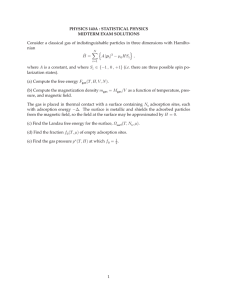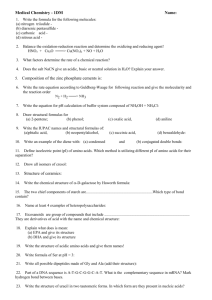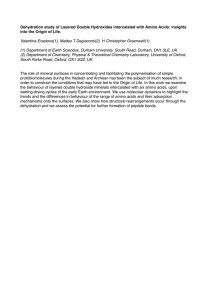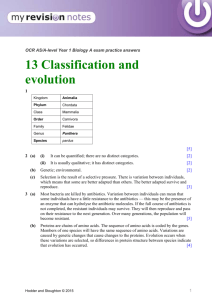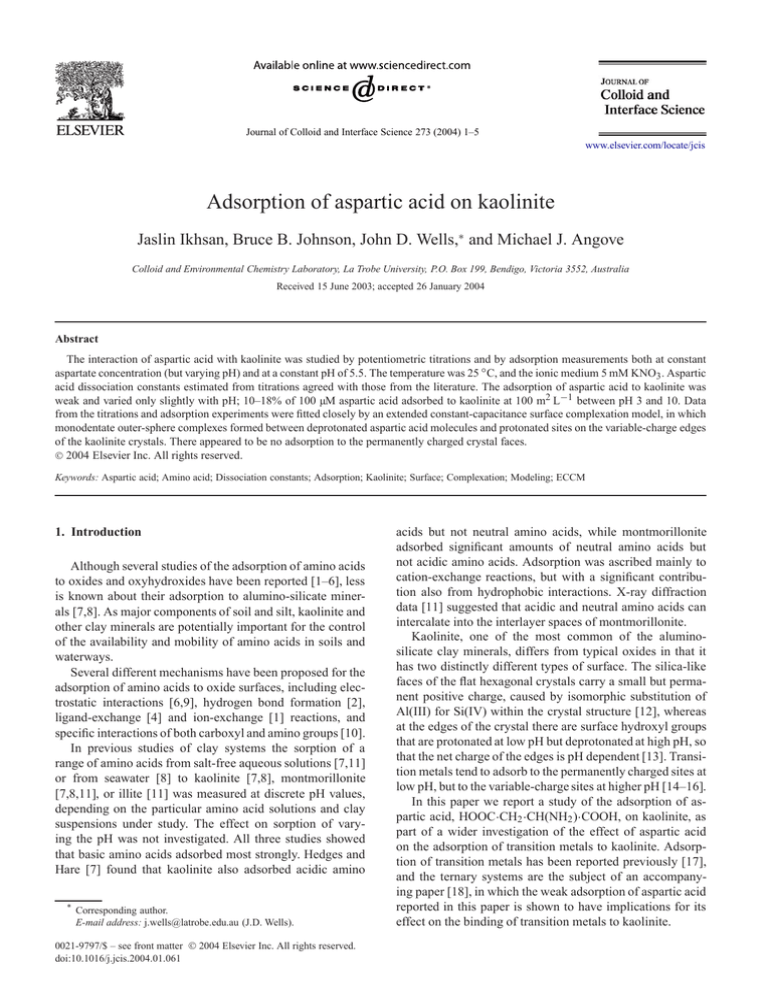
Journal of Colloid and Interface Science 273 (2004) 1–5
www.elsevier.com/locate/jcis
Adsorption of aspartic acid on kaolinite
Jaslin Ikhsan, Bruce B. Johnson, John D. Wells,∗ and Michael J. Angove
Colloid and Environmental Chemistry Laboratory, La Trobe University, P.O. Box 199, Bendigo, Victoria 3552, Australia
Received 15 June 2003; accepted 26 January 2004
Abstract
The interaction of aspartic acid with kaolinite was studied by potentiometric titrations and by adsorption measurements both at constant
aspartate concentration (but varying pH) and at a constant pH of 5.5. The temperature was 25 ◦ C, and the ionic medium 5 mM KNO3 . Aspartic
acid dissociation constants estimated from titrations agreed with those from the literature. The adsorption of aspartic acid to kaolinite was
weak and varied only slightly with pH; 10–18% of 100 µM aspartic acid adsorbed to kaolinite at 100 m2 L−1 between pH 3 and 10. Data
from the titrations and adsorption experiments were fitted closely by an extended constant-capacitance surface complexation model, in which
monodentate outer-sphere complexes formed between deprotonated aspartic acid molecules and protonated sites on the variable-charge edges
of the kaolinite crystals. There appeared to be no adsorption to the permanently charged crystal faces.
2004 Elsevier Inc. All rights reserved.
Keywords: Aspartic acid; Amino acid; Dissociation constants; Adsorption; Kaolinite; Surface; Complexation; Modeling; ECCM
1. Introduction
Although several studies of the adsorption of amino acids
to oxides and oxyhydroxides have been reported [1–6], less
is known about their adsorption to alumino-silicate minerals [7,8]. As major components of soil and silt, kaolinite and
other clay minerals are potentially important for the control
of the availability and mobility of amino acids in soils and
waterways.
Several different mechanisms have been proposed for the
adsorption of amino acids to oxide surfaces, including electrostatic interactions [6,9], hydrogen bond formation [2],
ligand-exchange [4] and ion-exchange [1] reactions, and
specific interactions of both carboxyl and amino groups [10].
In previous studies of clay systems the sorption of a
range of amino acids from salt-free aqueous solutions [7,11]
or from seawater [8] to kaolinite [7,8], montmorillonite
[7,8,11], or illite [11] was measured at discrete pH values,
depending on the particular amino acid solutions and clay
suspensions under study. The effect on sorption of varying the pH was not investigated. All three studies showed
that basic amino acids adsorbed most strongly. Hedges and
Hare [7] found that kaolinite also adsorbed acidic amino
* Corresponding author.
E-mail address: j.wells@latrobe.edu.au (J.D. Wells).
0021-9797/$ – see front matter 2004 Elsevier Inc. All rights reserved.
doi:10.1016/j.jcis.2004.01.061
acids but not neutral amino acids, while montmorillonite
adsorbed significant amounts of neutral amino acids but
not acidic amino acids. Adsorption was ascribed mainly to
cation-exchange reactions, but with a significant contribution also from hydrophobic interactions. X-ray diffraction
data [11] suggested that acidic and neutral amino acids can
intercalate into the interlayer spaces of montmorillonite.
Kaolinite, one of the most common of the aluminosilicate clay minerals, differs from typical oxides in that it
has two distinctly different types of surface. The silica-like
faces of the flat hexagonal crystals carry a small but permanent positive charge, caused by isomorphic substitution of
Al(III) for Si(IV) within the crystal structure [12], whereas
at the edges of the crystal there are surface hydroxyl groups
that are protonated at low pH but deprotonated at high pH, so
that the net charge of the edges is pH dependent [13]. Transition metals tend to adsorb to the permanently charged sites at
low pH, but to the variable-charge sites at higher pH [14–16].
In this paper we report a study of the adsorption of aspartic acid, HOOC·CH2 ·CH(NH2 )·COOH, on kaolinite, as
part of a wider investigation of the effect of aspartic acid
on the adsorption of transition metals to kaolinite. Adsorption of transition metals has been reported previously [17],
and the ternary systems are the subject of an accompanying paper [18], in which the weak adsorption of aspartic acid
reported in this paper is shown to have implications for its
effect on the binding of transition metals to kaolinite.

